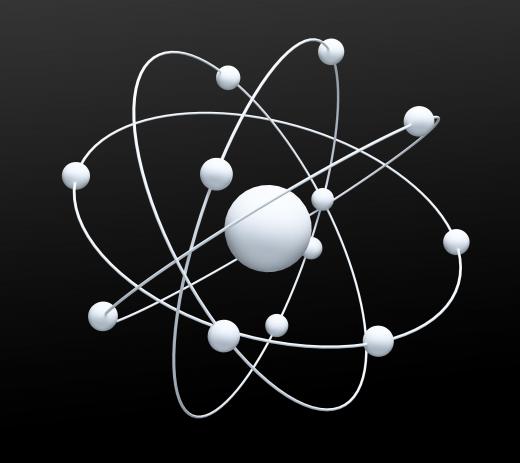What is the Photoelectric Effect?
When matter is struck by electromagnetic waves with relatively short wavelengths, such as ultraviolet light or visible light, its atoms can emit electrons. This process is known as the photoelectric effect or, less commonly, the Hertz effect, and it occurs because electromagnetic waves possess energy that is capable of dislodging the electrons in an atom. The observation of the photoelectric effect helped to clarify some issues about the nature of light and about the nature of atoms. Light, it was discovered, can act both as a wave and as a particle; light travels in wave motion but can physically impact surfaces and even cause mechanical change by dislodging electrons from atoms.
The photoelectric effect is usually observed when light is shined on metallic surfaces. The beam of light that is shone in a metal surface is referred to as the photocathode, and the electrons that it ejects from an atom are called photoelectrons. Shining light on a conductive metal surface can actually cause an electrical current, called a photocurrent , to form. A material that is sensitive to light, such as the metals which can carry an electrical current because of light, are referred to as photosensitive substances.

The number of electrons ejected as a result of the photoelectric effect is closely related to the frequency and the intensity of the light shone on the metal surface. Low frequency light, which has a long wavelength, tends to dislodge few, if any, electrons from a metallic surface. This is true if the light is of high intensity or low intensity. At high frequency, however, light tends to dislodge far more electrons, especially if the light is particularly intense. This basically means that, at any intensity, red light will release very few electrons but blue light will dislodge many.
The observation of the photoelectric effect presented strong evidence for the quantum nature of light, which had previously not had much support. It also supported the wave-particle duality theory of light at a time when most scientists believed that light behaved as either a particle or a wave, not both.
Light exists in discrete particles known as photons, which are scientifically described as quanta of light. One photon is one quantum of light; it is the smallest unit of light that can possibly interact with anything else. Quanta of light strike and dislodge electrons when light is shone on a metallic surface; this is the photoelectric effect.
AS FEATURED ON:
AS FEATURED ON:











Discussion Comments
Is there any definition of light?
@SkyWhisperer - We would see that, but not all of it would be photocurrent in action as such.
As I understand it you need a photosensitive substance to actually generate current. Without that, all you have are electrons just bouncing off surfaces.
@miriam98 - What if we had eyes that could see what was happening in the world around us, at the atomic level?
We would see atoms spinning, electrons bouncing off metal surfaces, molecules moving back and forth. We’d see the results of the photoelectric effect and kinetic energy at work all around us.
It might make our heads spin but it’s fascinating to realize how much activity is taking place all around us, beginning with something as simple as turning on a light.
@hamje32 - The photoelectric effect explained in this piece is quite straightforward and easy to understand. You don’t have to be a whiz in quantum physics to get it.
Actually, I had my first experience with photoelectric concepts way back when I played with electronics as a hobby. One of the projects I built was a photoelectric circuit, using a small photovoltaic cell that tripped a relay when light struck it.
I remember being amazed at something that could work like that without any battery power. At the time, I certainly didn’t know the theory of light’s wave particle duality, nor did I need to.
I just needed to know how to follow schematic diagrams and build circuits. I think it underscores a point. You don’t really need to know all the mysteries of the universe – how they work and such – to start building practical applications with them. I think it all falls in place over time.
I remember hearing about light being a wave and a particle once. What made this idea revolutionary was that these concepts, from what I understood, were basically contradictory – at least from the standpoint of traditional physics.
The article mentions quantum physics so maybe it’s in the quantum arena that paradoxes like this can happen; just about anything can take place in the quantum world.
Anyway the photoelectric effect is useful in applications; it’s what makes things like solar cells and photovoltaic cells possible. The problem, as has been pointed out, is the amount of light needed to dislodge a sufficient number of particles that can be used for meaningful electric sources.
You need lots of solar panels to power your house if you want to get completely off the grid.
Post your comments